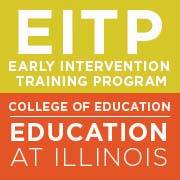The New Bailey-4 is a gold standard normative standardized instrument for evaluating children who may require early intervention services. By comparing individual performance for children aged 16 days to 42 months against a normative sample, using metrics like raw scores, scaled scores, standard scores, percentiles, and mean composite scores to assess abilities. The Bayley-4’s overall value and first choice as an unparalleled assessment instrument stems from a combination of its norm tables, comprehensive design, and psychometric properties.
Learn concept definitions such as about raw scores, and how they turn into standardized numbers for subtests, understand composite scores, percentile ranks, developmental age equivalents in easy and clear language that simplifies understanding.
Learn about basal, reversal, and ceiling discontinue rules, percentage delays, standard deviations, chronological age, percentile rankings, and developmental age equivalent and how they all relate together in computational formulation to determine eligibility and intervention. Aiding in clinical diagnosis and helping to set interventional goals for the eligible child, the Bailey-4 determines eligibility in both early intervention and pre-school special education, as well as during semi-annual progress notes in EI that often determine continuing eligibility.
Understand polytomous scoring and its benefits and how it differs from other forms of scoring. Learn about how the Bailey-4 differs from its predecessor the Bailey-III. Components of the Bailey-4, such as Norm tables, its psychometric rigor, and practical features like caregiver input, enable this instrument to stand out as a gold standard for clinical utility in assessing developmental delays and supporting PT's in early intervention by quantifying delays and progress.
Our primer is chock-full of case studies and case examples tailored to the gross motor delays, taking pains to simply the terminology and formulae used to determine eligibility, all the while shedding light on what might be technical language in a clearly presented primer.
Learn about administration, required materials, and strongly recommended additional materials, specialized Bayley assessment toys and examples of setup methods and options, the optimal order of administering the test, and how to introduce the test to the caregiver.
Sign up Now!
Notice: Legal Disclaimer: This course-work primer is based on the Bayley Scales of Infant and Toddler Development, Fourth Edition (Bayley-4) technical manuals and administration guides from Pearson Assessments. The Bayley-4 is a copyrighted assessment tool. Its actual items are protected by intellectual property laws, so reproducing them directly is not permitted. Ethical Use: To stay within copyright guidelines, any example items shown (like the puzzle task or bead stringing example) are made-up scenarios that merely imitate the structure and scoring approach of the real test. examples aren’t from the actual Bayley-4, but they’re crafted to demonstrate the scoring format occupational therapists or clinicians might use during developmental assessments. This course does not duplicate or in any way substitute the training required for the Bailey-4; there are many topics and concepts not covered here. We recommend the reader train directly with Bailey-4/Pearson. Online training is available. This primer does not adequately train. EITTOC sponsored by SAFE recommends you take a course recommended by Pearson.

APPROVED BY THE ILLINOIS EARLY INTERVENTION TRAINING PROGRAM FOR EARLY INTERVENTION CREDENTIAL CREDIT for 4.0 Hours
Disclosure: David C Saidoff, has the following relevant financial relationships to disclose: he receives monetary compensation for the preparation of this course, in addition to a percentage of company sales, and has the following relevant non-financial relationships to disclose: EITTOC Board of Directors: volunteer member. Declaration: Approval of this course does not necessarily imply that any of the governing bodies (e.g., West Virginian Board of Physical Therapy, or other such governmental or NGO’s supports the views of the presenter or sponsor. Information provided should be used within the scope of practice. No relevant financial or non-financial relationships exists between EITTOC or the products discussed any course; no such relationship or endorsement exists for any products mentioned in any courses sponsored by EITTOC, or in any of the items (such as specific AED or Epinephrine injection product) or any testing instrument used to evaluate children; the above course is specific to said-topic, and may not be extrapolated to any other course or topic outside the scope of this course. Course instructor(s) have no other financial or non-financial remuneration - whether prior to or following course delivery; the above advertisement is made available to all physical therapy (and other) licensee on a non-discriminatory basis. Ascend has approved this course and may be contacted about any concerns. Information provided should be used within scope of practice. |







